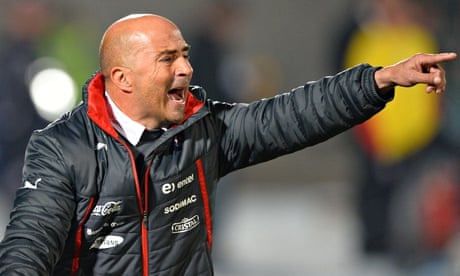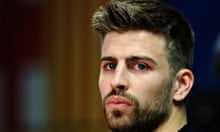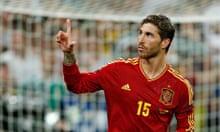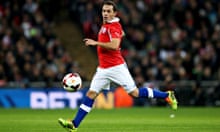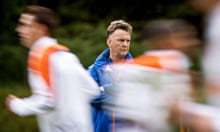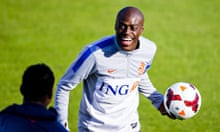This article is part of the Guardian's World Cup 2014 Experts' Network, a co-operation between 32 of the best media organisations from the countries who have qualified for the finals in Brazil. theguardian.com is running previews from four countries each day in the run-up to the tournament kicking off on 12 June.
Attack. Attack. And attack. No matter who's in front. That's the unwavering game of Chile in recent years.
Aggression - in a good sense - is another trademark, and runs through the team from defence to attack, an idea Jorge Sampaoli took from his idol and former La Roja coach, Marcelo Bielsa, to avoid getting exhausted from running after the ball, but trying instead to suffocate the opposition.
Tactically, Sampaoli is very much the same as 'El Loco' [Bielsa], he usually plays with three forwards: two on the wings either side of a classic No9. Nevertheless, his liking for the creative Jorge Valdívia – a skilful offensive midfielder – has involved slight changes in his traditional line-up, giving the Palmeiras the responsibility of getting the final ball to Eduardo Vargas and Alexis Sánchez, whooften make quick and sharp diagonal runs behind opponents' defences.
The flanks are an important factor too in Sampaoli's side. The wing-backs – Eugenio Mena from Santos and Mauricio Isla from Juventus – are vital in his tactics, so he needs fast and reliable players to make his tactical vision a reality. The connection between Isla and Alexis Sánchez on the right flank –which dates back to when both played for Udinese - is an area from where Chile look to hurt teams the most..
La Roja do not have much height in attack, so long crosses to the far post are rare and instead usually aimed at the near post, where the anticipation of Vargas or Sánchez can make the difference. With the midfield also pushing forward in support, Chile has plenty of goalscoring options, and don't mind committing players to attack.
What can we expect from Chile in Brazil?
Chile will be worth watching. Sampaoli's attacking style has made this squad very entertaining during the last South American qualifiers, and this World Cup sees La Roja with the best generation fans can remember. Never before has Chile had so many players in important teams in Europe and Brazil: Arturo Vidal and Mauricio Isla at Juventus, Eduardo Vargas at Valencia, Alexis Sánchez of course at Barcelona, Felipe Gutiérrez at FC Twente in Holland, Claudio Bravo at Real Sociedad, Jorge Valdívia at Palmeiras, and Eugenio Mena at Santos, and the list goes on. A constellation of stars that had everyone dreaming – until the World Cup draw. Holland and Spain join Chile and Australia in Group B, one of the toughest without doubt.
Nevertheless, Chileans fan are keeping their hopes high; even against the two finalists from four years ago in South Africa. If La Roja make it to the knockout stages, it will be the confirmation that this team is more than names, and the culmination of work which started with Marcelo Bielsa back in 2007 when Chile started to become one of South America's most respected opponents.
2) Is Chile 2014 better than Chile 2010?
The answer is definitely yes. Whether Chile's passion for attack is the same remains to be seen, but the current version are more flexible. Back in 2010, Bielsa adjusted his players to his 4-3-3 formation, even sacrificing a talented creative midfielder like Valdívia as a centre-forward; today Jorge Sampaoli is willing to change from 4-3-3 to 3-4-3 or 3-5-2 depending on the players.
Sampaoli's favourite formation, though, is 4-3-1-2, using Valdívia behind Sánchez and Vargas, where he can really destabilise opposition defences.
3) Chile's weakest point?
There is no doubt: the defence. While Mauricio Isla and Eugenio Mena are good full-backs, Chile are weak in the centre. There just aren't a couple of tall, strong obvious defenders; so Gary Medel, Cardiff City's midfielder, has to be relocated and play as a centre-back. He is quick and aggressive, but he is certainly not tall.
Marcos González, who is tall, arrived with the squad in less than peak physical condition, after not playing regularly for Flamengo in Brazil.
Sampaoli and his staff worked hard to get González back in shape for the World Cup but he could not make it so Sampaoli will be forced to improvise again, and mainly, try to keep the ball as far as possible from Chile's goal.
This article was written by the editorial team at the Chilean television station TVN
